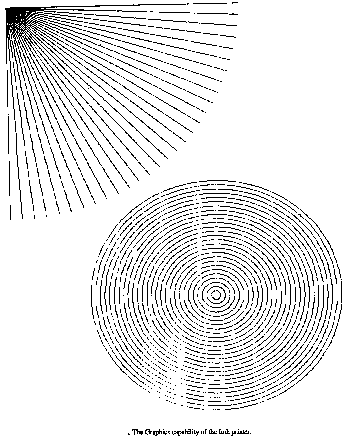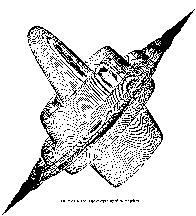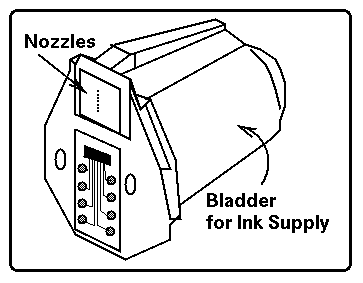
Dot matrix ribbon and ink-jet printers are fast becoming graphics printers: i.e. they are capable of producing pixel based pictures rather than just character output.
The Itoh model 8510A and the M1550 are typical of the new breed of compact desk-top dot matrix serial impact printers used for data communication terminals, hardcopy of CRT displays, peripheral terminals for minicomputers and microcomputers, and small-sized business systems. The character format is a dot matrix of 7(H) x 9(V) or 8(H) x 8(V). Print speed is 120 characters/second with a baud rate up to 9600. Up to 80 characters can be printed per line in 10 characters per inch mode for the 8510A and 132 for the M1550 model.
The printer's main features are low cost, high-quality print and bit image graphics. It also allows different character pitches as well as four different fonts. Variable sized forward and backward line feeds are available. The printing is selectable as bi-directional or uni-directional.
A variety of transmission formats are selectable as well as power on options. The graphics capabilities are a major feature of the this printer (see Figure 2.13 a and b).
To get the bit image graphics the printer accepts a known
number of bytes which are used to activate the hammers in the 8
pixel high head.

Therefore the column of hammers represent one X co-ordinate
and 8 y co-ordinates. This means that the M1550 can display up to 2176 dots
per line and approximately 850 lines per page.


Fig. 2.13 : Example of typical graphical printer's resolution (82K bytes).

Fig. 2.14 : Example of typical graphical printer's resolution (96K bytes).
New technology that uses ink directly rather than via a ribbon and hammers. The print head (Figure 2.15) has a number of microscopic vertical nozzles that each supply a drop of ink as the printhead scans across the paper. The droplet of ink from each nozzle is ejected by applied pressure usually from a portion of the droplet being vapourized. The vapour bubble grows rapidly and ejects the droplet out through the nozzle onto the paper. The nozzle is then refilled from a reservoir or bladder.
Many problems are associated with ink-jet technology:
evenly spaced dots, ink flow, aerodynamics of the print head
causing turbulence, etc. However colour ink-jet printers are now
available that will reproduce bit graphics at a very reasonable
cost. The print heads have 3 colour reservoirs plus a black
reservoir.

This typically gives magenta, yellow, cyan, red, green, blue, black
and white.
The black ink is used because the addition of the three primary colours
- yellow, magenta and cyan - should produce black but in reality
produces a low contrast grey.


Fig. 2.15 : The Hewlett-Packard Ink-Jet Printhead
Laser beam printers can produce multiple copies like a
photocopier but the original image is digitally produced. The
image is not optically reflected onto an electrostatically
charged cylinder but formed on it by the projection of the laser
beam via lenses and mirrors. The rotating cylinder is charged,
attracts particles of the developer, is partly discharged by the
energy of the laser beam, deposits the remaining developer onto a
sheet of paper and then repeats the process. (See Figure 2.16.)
This happens at very high speed and since the laser is capable of
very narrow beamwidths the resolution of the image produced is
very high. 600 dots per inch at 6000 A4 pages per hour for a
typical device.)

Fig. 2.16 : The Laser Printer